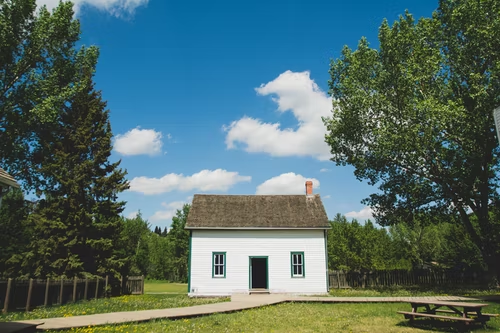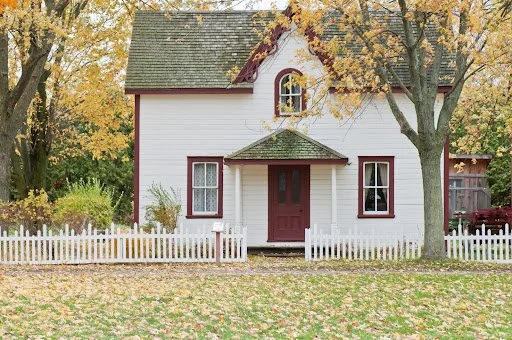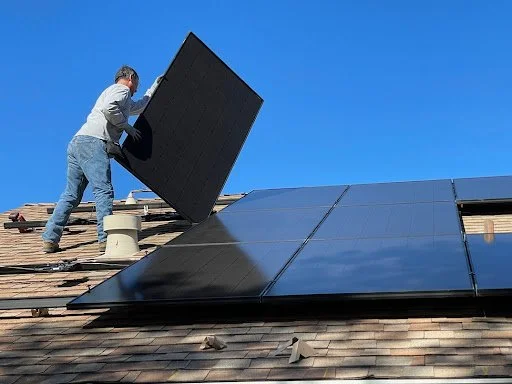1. Find the Perfect Location
So, you are ready to start the building process but do you have your dream location? You should know before the construction starts where you are going to build the house. Not only will you need to create a budget according to the location and price of the land you are buying, but also, you'll need to ensure that the land you purchase will be safe to build on.
It's not advisable that you jump at the first opportunity to buy any place. First, do research on the up-and-coming neighborhoods. Conduct a comparative analysis with other places you have seen. The most important step is to visit these places yourself to get a first-hand view of how it is.
Make sure the neighborhood has a proper drainage system, pollution control, and a family-friendly environment. If it's somewhere you see yourself living, you may want to put in an offer on the land.
2. What's In My Pocket?
Before you start buying the most costly material and hiring world-class designers for a consultation, ask yourself: can I really afford all this? If you don't have the money to support such decisions, you'll find yourself out of funding long before the project is complete. When you are building a house, you have to set a budget and not divert from it, or else you won't be able to complete the house in time.
You must decide on a figure, divide the money categorically, and also set aside an emergency fund. This is because construction is not a smooth process. Usually, unforeseen issues arise. At times the material prices go up. You must be ready for any emergency.
Managing your finances during construction is also important to ensure that your money is going in the right place. You should be aware of the market and understand fully the costs of buying materials and hiring professionals for the job.
3. Does Size Matter At All?
Well, it most certainly does. Once you get hold of your favorite area and have enough money to invest in building the house, start deciding on the size. If you plan on living alone, a studio apartment would suffice, but most likely, you'll want a house for your family.
If you can afford it, you need at least three bedrooms: one master bedroom for you, one for kids, and one for unannounced guests. You will also need a living room and dining room too. If you can't afford a big house, you can create a hall-like room and divide it into living and dining areas.
You can make two floors if your plot space is small. That way, you will be able to divide the space between making rooms for yourself and other people in the house.
4. Plan Effectively
You cant achieve your goals without effective planning. You can't create a single plan for the entire process; you'll need to make one for every day till the house is complete. From making designs to hiring people and seeing your ideas convert into reality, you must plan ahead of time. What are you going to design? Who will design it? Who will be your contractor? What will you do if things aren't completed on time?
These are some of the very basic questions that you must ask yourself before you get into construction. It is not as simple as creating new construction plumbing; it is a very complicated and unpredictable process that requires nerves of steel to help you handle every situation where something goes wrong.
If you plan effectively, you will be able to at least deal with unforeseen circumstances instead of feeling helpless.
5. Face The Challenges
Construction is a tricky process. You have a perfect mental picture of what you want and how things should go. You will make plans, hire a designer, the contractor will give a practical estimate, and your house will be ready in 3 to 4 months. This is an ideal situation. But that's not how things go in reality.
You have to be realistic if you want your house to be done on time. Don't go above your budget. Don't make unrealistic designs that are neither feasible to build nor easy to maintain. Be flexible and compromise on some ideas for the sake of practicality.
You sure want everything to be perfect, but you have to settle for something functional. Otherwise, you will be in trouble for years to come.
6. Do I Really Need New Plumbing?
Definitely, you need plumbing to make your home functional. Otherwise, you won't be able to work in your kitchen, do laundry or use the bathroom. The installation pipes need to be done efficiently so that three is no internal leakage in the walls.
If the pipes leak or the water connection system is poor, your walls will show cracks, and the paint will start flaking. This will not only give a shabby look to your house but also internally weaken the walls. Consequently, a mishap may occur.
Therefore, opting for new plumbing is crucial to having a safe, new home. But how would you know your plumbing is perfect? Keep a few pointers in your mind, like hiring a good plumber and knowing your plumbing needs fully, and you will be good to go.
7. Create Ample Storage Space
Storage space is an important part of building any house. In every home, there are tons of things that are seldom used. You'll need sufficient storage space if you don't want your house to have all your extra stuff lying around.
The size of your storage space depends upon the things you are going to keep in it, but the more, the better. It will completely declutter your house. Make sure it is easy to access. Don't create an attic-like space if you don't like climbing stairs every time you need to get something. Moreover, carrying heavy things to the attic and getting them down from it will be a considerable hassle.
Usually, kitchen items are within access in most homes. You can create a storage space near the kitchen so you can access it anytime you want and don't have to worry about misplacing your favorite utensils.
8. Will My House Last An Eternity?
How long the newness of your house will remain intact depends upon the kind of material you use in building it. If you are buying low-quality materials thinking you will save money, you are highly mistaken. The low-quality materials will wear out quicker than you can imagine, and before you know it, you will be spending on the maintenance or renovation of your house.
To avoid that from happening and increase the durability of your new home, buy high-quality materials. You can try to limit expenditure elsewhere but don't do it with your vendors, or else you will end up in a concrete mess, pun intended.
You also need high-quality paints, especially for the exterior of your house. This is because the rainy season can do great damage, and you can not keep spending on refreshing coats on the house. So the smart thing here is that you spend once on good quality to ensure your structure will last for years.
9. Hire Professionals
Do you think you can do everything all by yourself? You are mistaken, my friend. You need professionals to design and bring your house to reality. You can give your opinion on what you want as a final product, but the designers and contractors will decide the feasibility of those ideas.
Now there are a number of professionals out there who can assist you in building the house. Furthermore, there are different types of professionals: designers, contractors, builders, architects, etc. You can also hire designer firms or construction companies to eliminate the hassle of choosing professionals individually.
But before you pick any random person for the most important investment of your life, check the market. See who is capable of working on your house and who can make it a reality. You must interview potential professionals and ask about their experience. Only choose those whose interests align with yours. You can ask for a consultation to check their capabilities. Also, make sure you can afford them.
10. Kitchen, Bath & Beyond
You are not merely building rooms in your house; you want to make it livable. And you cannot make it livable if it lacks a proper kitchen and bathrooms. Ideally, every room has its own attached bath for the occupier's convenience. If that is not possible due to a lack of space, you can create a shared bathroom outside bedrooms so that all users can access it equally. Make sure the new plumbing is properly done for all bathrooms.
The kitchen is also pivotal to having a fully functioning house. You need a proper drainage system in the kitchen, as well as cabinets, countertops, and enough space for placing all your appliances.
To make a proper kitchen and bathroom, you will have to purchase a lot of ready-made items like taps, plastic pipes, shower heads, and marble. Make sure these are coming from a well-reputed vendor, or else they will break down in no time and cost you a fortune to replace. Also, ensure your workers install all taps and pipes properly to prevent leakage that can cause a number of issues.
11. Hi-Tech Home
Technology is so advanced these days that you can have ergonomic homes in the form of loft-style living places. These are not only sophisticated homes but also work towards your convenience. You can integrate automatic functions that eliminate the need to hire house help to do everything.
For example, using technology, you can make the lighting system operate with your voice instead of pushing buttons. You can also have in-built appliances in your kitchen as well as have them voice-operated. How cool is that?
It may prove more costly than regular homes, but why not have a self-functioning home if you can afford it?
12. Get It Done Before You Move In
Ideally, you should complete the entire house before you move in. This is because, when you move in with your family, to live comfortably, you need everything to be functioning properly. If the plumbing is incomplete or your kitchen lacks a stove connection, it will only cause inconvenience and discomfort.
On top of that, you have spent enormous time and effort on moving and will have little energy to still be dealing with construction. You might go out of budget too because of all the moving, and you will be disturbed way too much due to the loud drilling, plumbing, and hammering sounds.


















